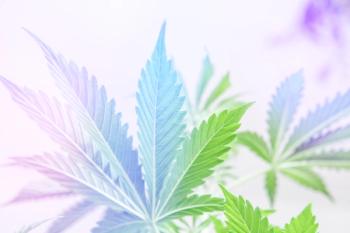
A Shift in the Air: Changes in Young Adults’ Vaping and Substance Use During COVID-19
How has the COVID-19 pandemic affected the way young adults use substances like vaping, alcohol, and marijuana?
COVID-19 has caused a surprising change in vaping and other substance usage in young adults aged 18 to 25. According to a recent
“Substance use is highest in the young adult age group, so we wanted to target this population,” Pravesh Sharma, MD, a psychiatrist at Mayo Clinic Health System in Eau Claire, WI, and the study’s lead author, said to the press. “We would like to understand why they vape and what their attitudes were regarding the potentially harmful nature of vaping.”2
Before the pandemic, Mayo Clinic researchers were studying the potential harm of vaping to the respiratory system. With the onset of COVID-19, however, the survey shifted course. Rather than solely assessing the factors influencing vaping, the new, adjusted survey investigated young adults’ use of other common substances, such as alcohol, marijuana, and tobacco; and asked questions to better understand the effects of daily stresses during a public health crisis.
“As COVID-19 came on the scene, it was primarily thought to have severe respiratory implications,” said Sharma. “Since we were about to launch a study examining the factors associated with vaping use, which can lead to lung injury, it made sense to revise our questionnaire slightly to address the broader question of the use of vaping and other common substances during a respiratory disease pandemic.”2
The survey was sent out in April to approximately 6119 young adults who had been seen in Midwestern Mayo Clinics within 4.2 months before the pandemic. Its release followed the stay-at-home orders and social distancing mandates issued by state and local governments.
Of 1018 respondents, more than half reported vaping, using marijuana, using tobacco, or drinking alcohol during the COVID-19 pandemic. (The authors note that the study’s limitations include a reliance on self-reporting and a 16.6% response rate.)
“We did see some reduction in inhaled substances, which could mean that young adults were reacting to the news coverage of COVID-19’s respiratory effects,” said Sharma.2
An interesting, unintended discovery was also made: the more lonely, depressed, or anxious the survey respondents felt, the more likely they were to add or substitute another substance. Perhaps, as Sharma suggested, this was due to an attempt to cope with limited social interactions and strain.
“During the time of this pandemic, screening for substance use, loneliness, anxiety and depression is crucial,” Sharma stated. “Just asking, ‘How are you holding up during this difficult time’ goes a long way.”2
References
1. Sharma P, Ebbert JO, Rosedahl JK, Philpot LM. Changes in substance use among young adults during a respiratory disease pandemic. SAGE Open Med. 2020;8: 2050312120965321.
2. Mayo Clinic. Changes in vaping, other substance use, another side effect of COVID-19. News release. November 19, 2020.
Newsletter
Receive trusted psychiatric news, expert analysis, and clinical insights — subscribe today to support your practice and your patients.














